Neglecting Opportunities for Internal Talent
Fair and competitive internal hiring processes play a critical role in achieving D&I success. After all, it won’t matter how great you are at recruiting new people to your team if you don’t give them good reasons to stay. And that includes opportunities both for promotions and lateral moves.
If supporting mobility for internal talent is so vital to achieving diversity hiring goals, why do so many organizations fail to engage the diverse employees they already have?
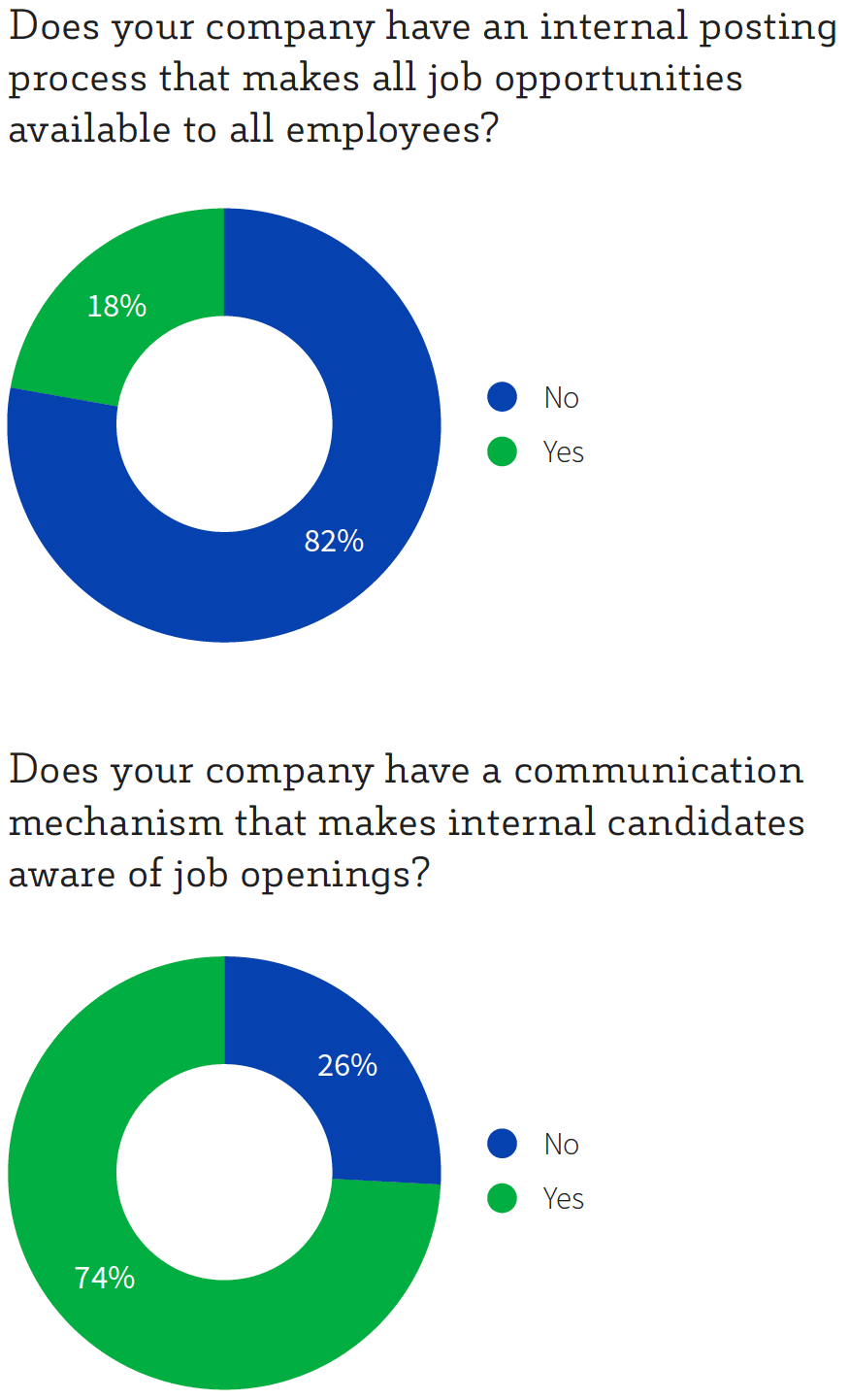
Most of our assessment participants reported taking the basic steps to fill open positions internally. Across industries, most participants said they make job postings available internally, and nearly three-quarters have a communication mechanism that makes internal candidates aware of job openings. But these passive methods may not reach your diverse talent.

Does your company have an internal posting process that makes all job opportunities available to all employees?
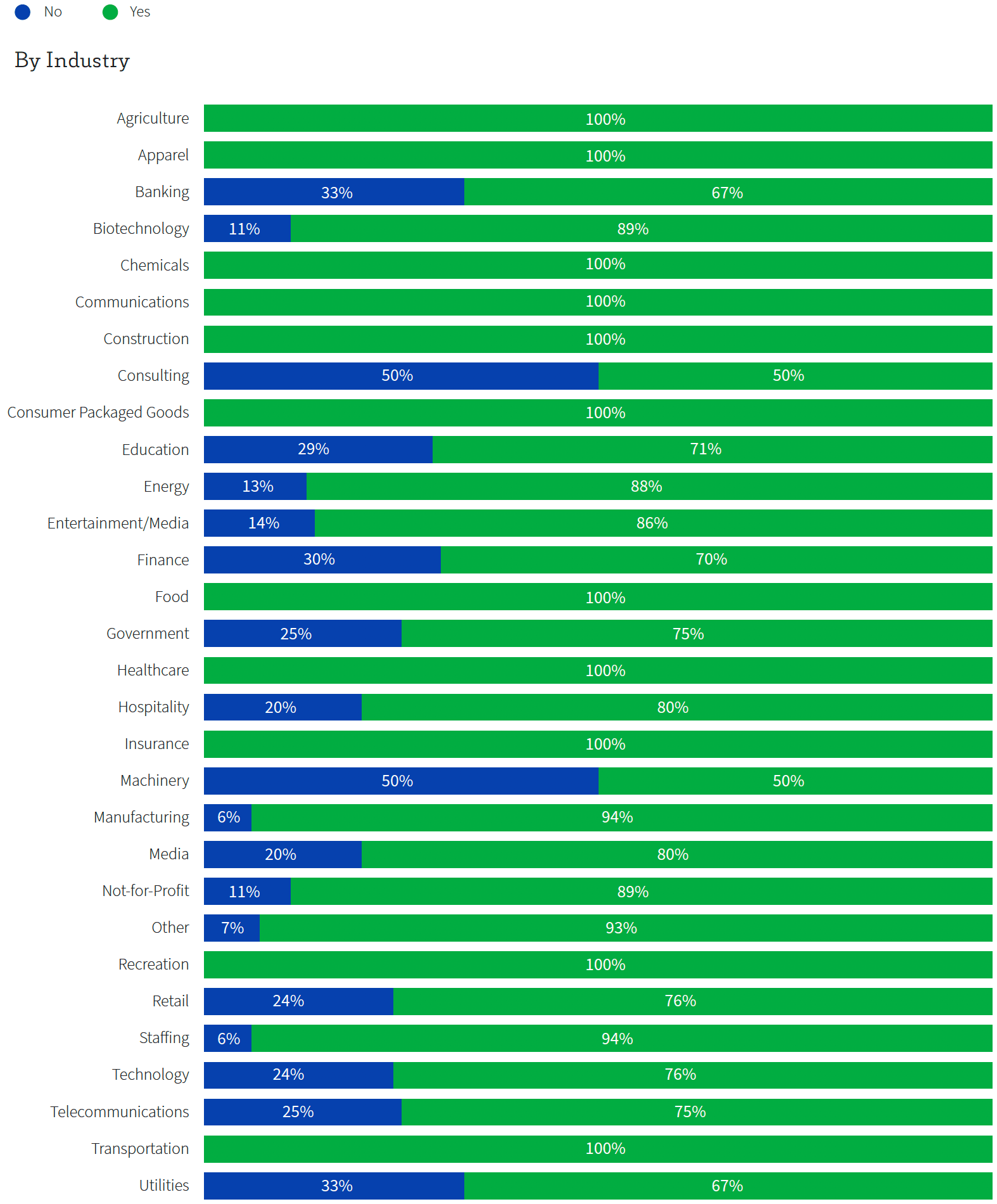
Does your company have a communication mechanism that makes internal candidates aware of job openings?
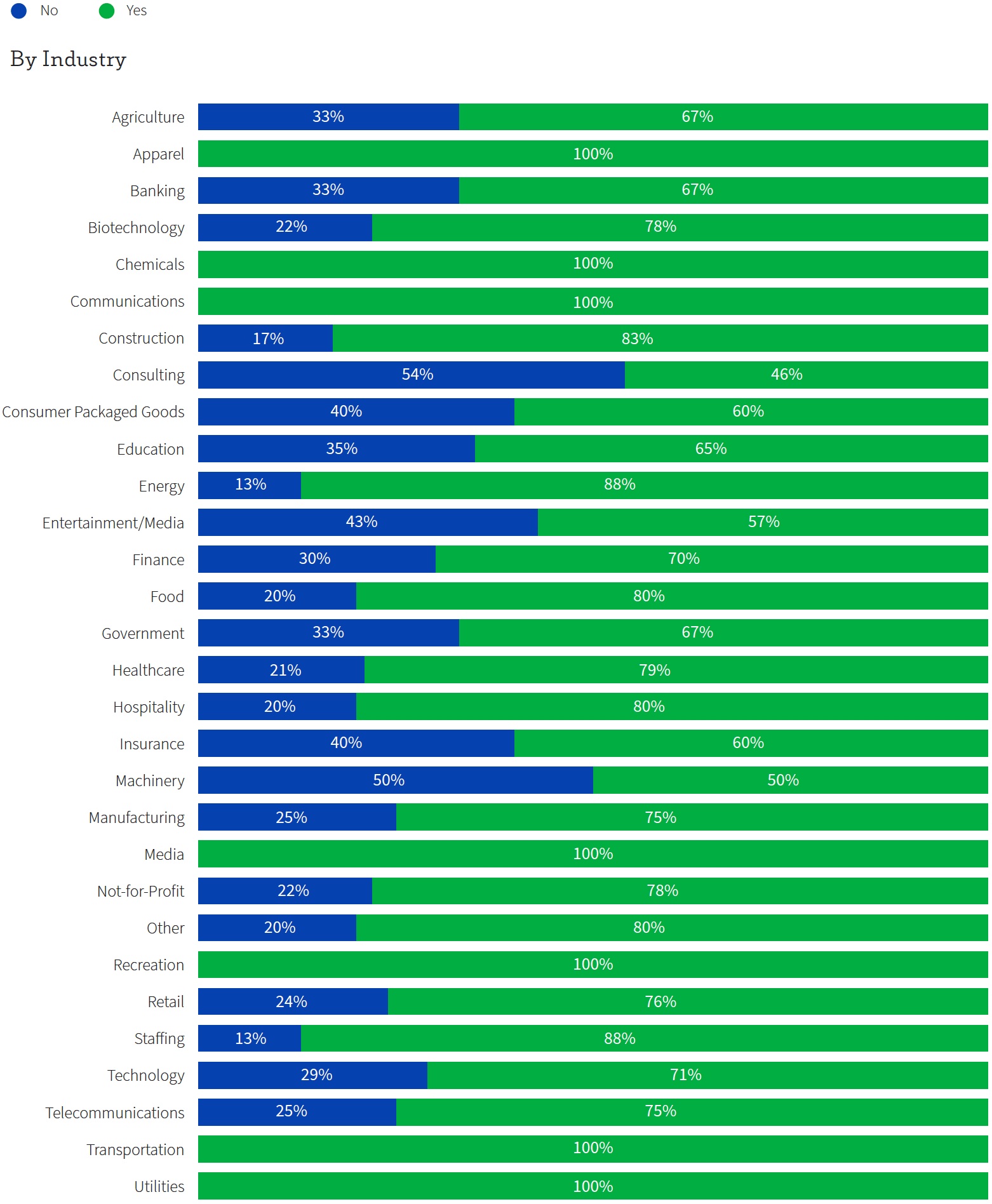
While respondents reported using these general communication channels, many companies report that they aren’t implementing more targeted outreach, such as leveraging employee resource groups.
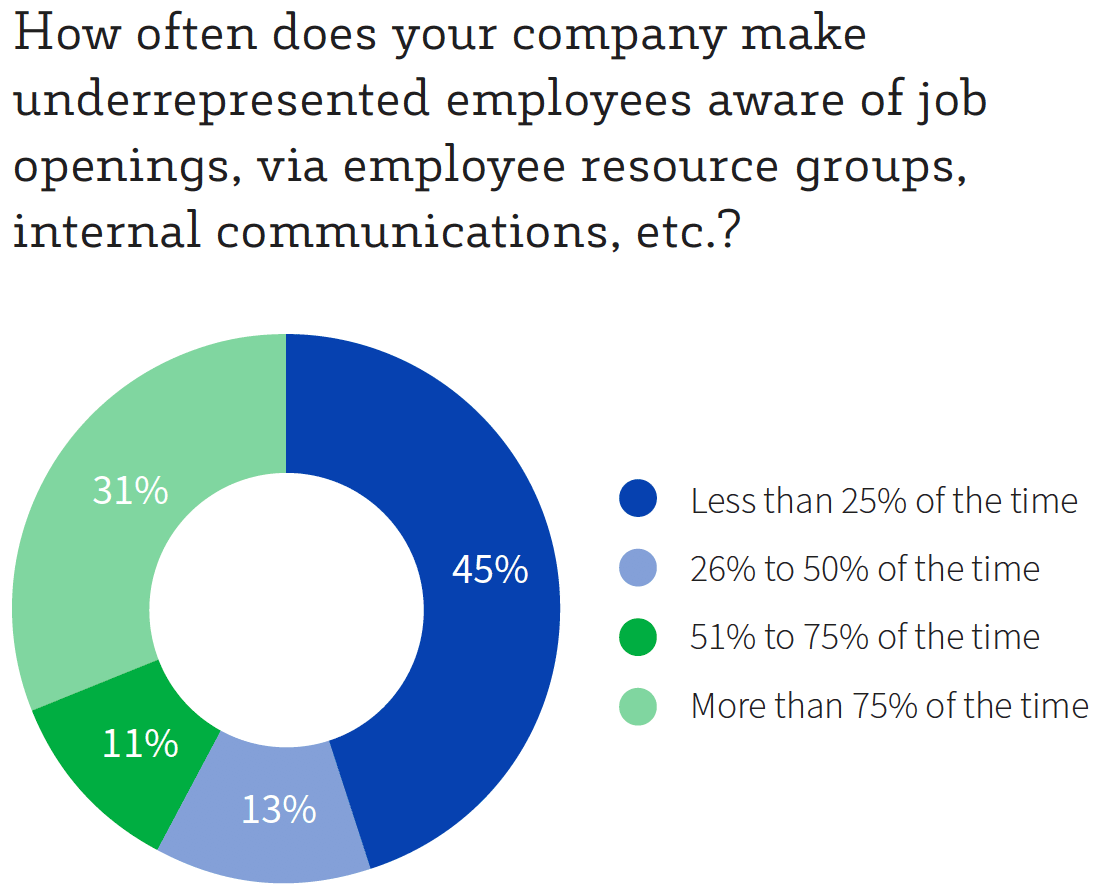
Responses vary significantly by industry, but participants in Media and Energy report advertising job openings to existing underrepresented talent most of the time. Media, being a public-facing industry, is under increased pressure to demonstrate diversity to attract larger audiences. And internal talent already possesses valuable institutional knowledge, often requiring less time to acclimate to a new role.

How often does your company make underrepresented employees aware of job openings, via employee resource groups, internal communications, etc.?
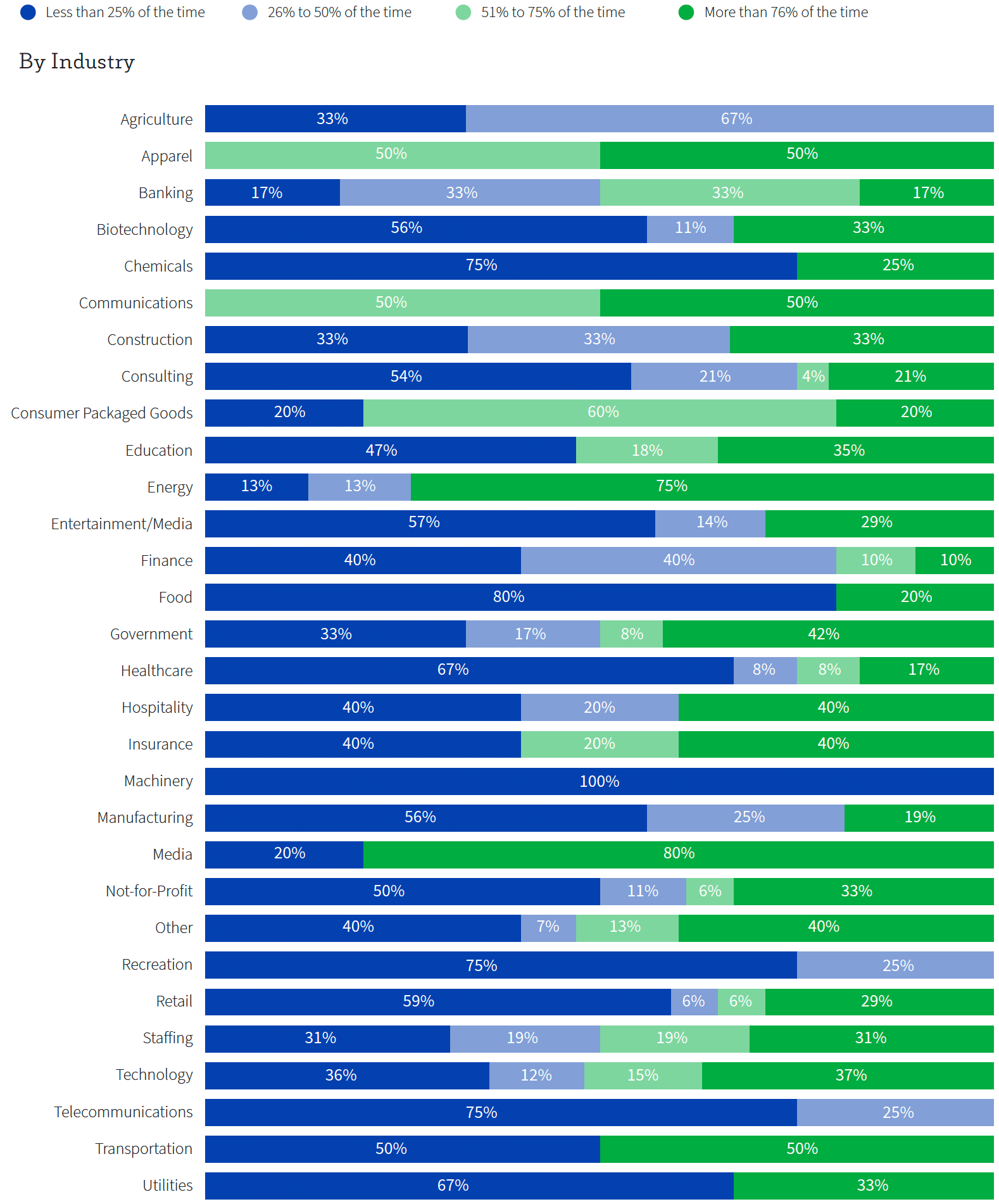
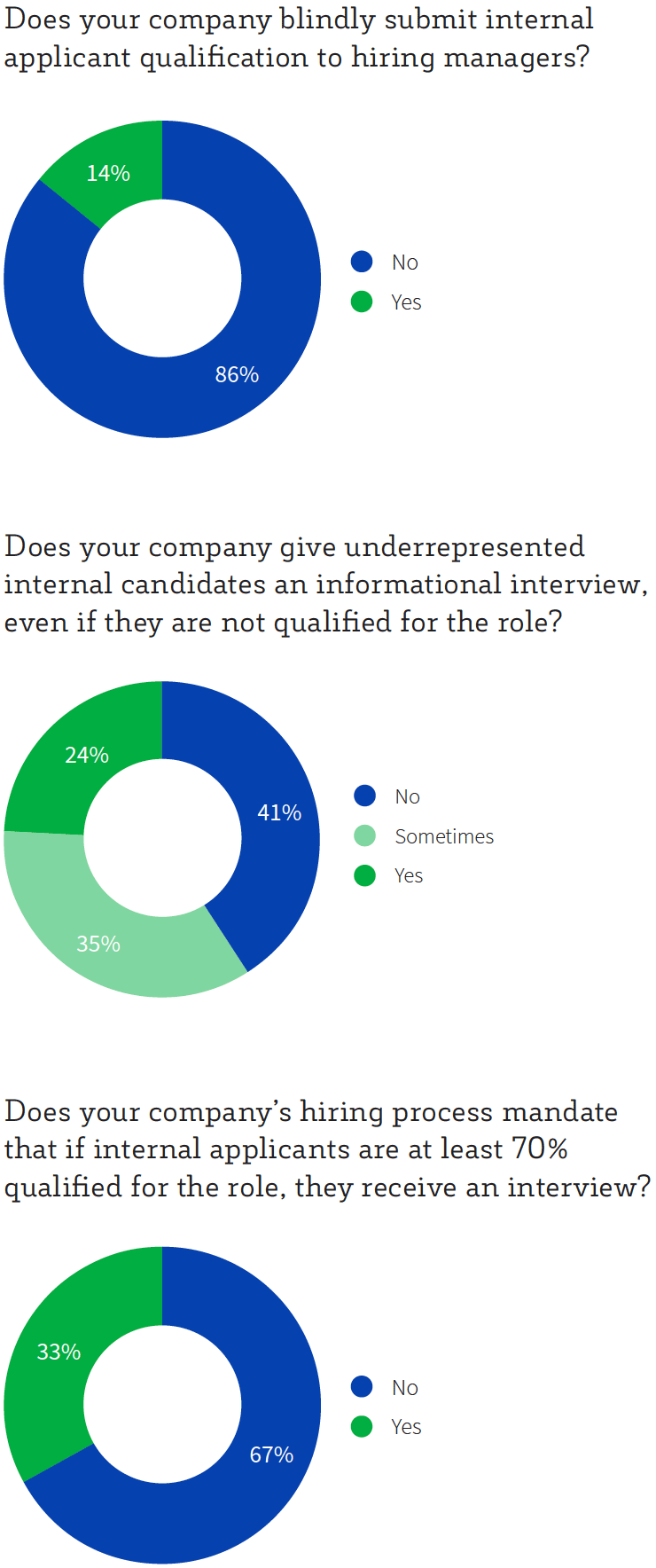
An easy — but significant — step toward mitigating bias is to accommodate blind submissions of internal applications. But less than 15% of participants currently scrub identifying factors from internal applications to minimize bias from hiring managers and give diverse internal talent a fair shot.
Some participants said their companies are more open to giving underrepresented internal talent a chance, with nearly a quarter giving an interview to underrepresented talent even if they may not appear to be obviously qualified for the role. And a little more than a third of participants mandate that hiring managers interview internal underrepresented applicants who are at least 70% qualified for the role. Implementing this best practice can have a tremendous positive impact on achieving your diverse hiring goals.

The use of additional checks and balances in internal hiring processes, which can also mitigate bias, is mixed among participants in the assessment. Only slightly over half of them said their companies ensure more than one manager is involved in internal hiring.
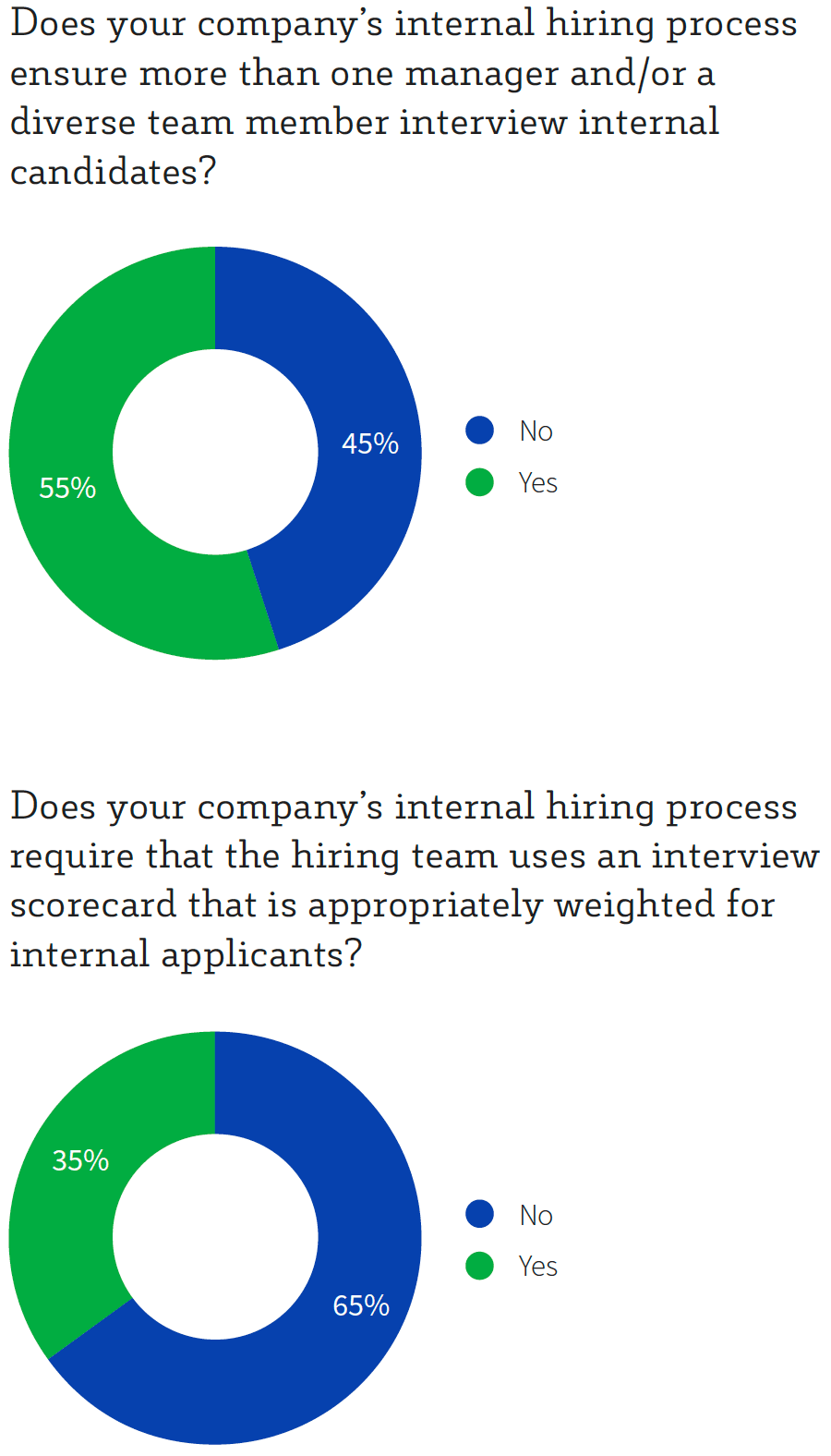
Since internal hires already possess institutional and cultural knowledge, any training they require would be focused on job-relevant criteria. This should change how they’re scored during an interview. But only 35% of participants said their companies use an appropriately weighted scorecard for internal hires.
The course of action is clear: Increase opportunities for your existing diverse talent to access development and internal mobility. Take advantage of the talent you have before they feel underappreciated and move on.

Making the Most of Your People
IKEA’s People and Planet Positive mission extends beyond its products — it also applies to the people who make them. The company’s talent leaders take pride in finding, energizing and enabling hidden talents throughout the organization.

“We’re not interested in talent acquisition and extraction; we’re really interested in building up relationships,” says Karen Rivoire, an IKEA Employer Brand & Equality Leader at IKEA Franchisor. “That, to me, is IKEA’s strength.” And that’s where SmartRecruiters’ technology and philosophy come into play. Although it’s still early in IKEA’s engagement with SmartRecruiters, Karen is excited about using their platform to start conversations and maintain relationships — especially with diverse talent.
“The internal movement is as important as that external [movement],” she says. “We want to make sure that those flows of talent that we still haven’t fully unearthed internally, that [there’s] a very good mix with [people] we bring in from the outside.” Using the SmartRecruiters’ tools, IKEA is dedicated to helping internal talent reach their full potential. Part of that commitment is to give diverse co-workers opportunities to move into new roles within the company.
“We’re really keen to make sure that we’re working with the right communities and sourcing in the right way,” Rivoire says. “SmartRecruiters enables us to meet people where they are.”
Action Items
Give internal applicants the advantage over external applicants by posting jobs internally only for a specific amount of time.
Offer to interview all internal applicants who are at least 70% qualified for the role.
Offer historically underrepresented internal candidates an informational interview, even if they are not yet suitable for the role.